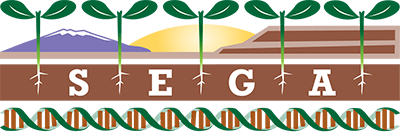You are here
Unique arthropod communities on different host-plant genotypes results in greater arthropod diversity
Publication Type:
Journal ArticleSource:
Arthropod-Plant Interactions, Volume 6, Issue 2, p.187 - 195 (2012)URL:
http://link.springer.com/article/10.1007/s11829-011-9177-9Abstract:
Studies on the effect of plant-species diversity on various ecological processes has led to the study of the effects of plant-genetic diversity in the context of community genetics. Arthropod diversity can increase with plant-species or plant-genetic diversity (Wimp et al. in Ecol Lett 7:776鈥780, 2004 ). Plant diversity effects can be difficult to separate from other ecological processes, for example, complementarity. We asked three basic questions: (1) Are arthropod communities unique on different host-plant genotypes? (2) Is arthropod diversity greater when associated with greater plant-genetic diversity? (3) Are arthropod communities more closely associated with host-plant genetics than the plant neighborhood? We studied canopy arthropods on Populus fremontii trees randomly planted in a common garden. All trees were planted in a homogeneous matrix, which helped to reduce P . fremontii neighborhood effects. One sample was comprised of few P . fremontii genotypes with many clones. A second sample was comprised of many P . fremontii genotypes with few clones. A second data set was used to examine the relationships between the arthropod community with P . fremontii genetic composition and the neighborhood composition of the focal host plant. Unique arthropod communities were associated with different P . fremontii genotypes, and arthropod community diversity was greater in the sample with greater P . fremontii genotypic diversity. Arthropod community similarity was negatively correlated with P . fremontii genetic distance, but arthropod community similarity was not related to the neighborhood of the P . fremontii host plant.
- Log in to post comments
- Google Scholar
- RTF
- EndNote XML
- RIS
Theme by Danetsoft and Danang Probo Sayekti inspired by Maksimer
